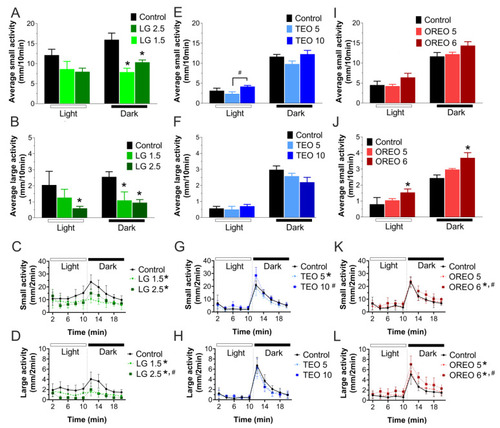- Title
-
Essential Oils Produce Developmental Toxicity in Zebrafish Embryos and Cause Behavior Changes in Zebrafish Larvae
- Authors
- da Silva, I.I., da Silva, N.P.C., Marrs, J.A., Cadena, P.G.
- Source
- Full text @ Biomedicines
|
Schematic representation of tests performed for toxicity evaluation of plant essential oils in embryo and larvae zebrafish. |
|
Epiboly percentages at 8 hpf in zebrafish embryos exposed to ( |
|
Representative zebrafish embryo epiboly and typical teratogenic effects observed in zebrafish embryos exposed to lemongrass, thyme, and oregano essential oils. Legend: ( |
|
Survival curve and the mortality linear regression of zebrafish embryos after exposure to lemongrass (LGEO), thyme (TEO), and oregano (OREO) essential oils ( |
|
Zebrafish larvae behavior in excitatory dark–light locomotor test. ( |





